► Jeep’s smallest EV has reached the UK
► Promises off-road ability and a 249-mile range
► But can the Avenger beat the best in class?
This is the Jeep Avenger. It’s an all-new compact electric car for the brand – and it’s been raking in awards since it was launched, It even nabbed the coveted title of 2023 European Car of the Year. But, having now spent some time in the car on UK roads, we fear its accolades need to be revisited.
The Avenger is certainly a striking-looking compact electric SUV and we’re comfortable enough to stick our necks out and say that none of its direct rivals can offer the same level of off-road ability. Despite this, it’s far from being the best in its segment. In fact, it’s rather average.
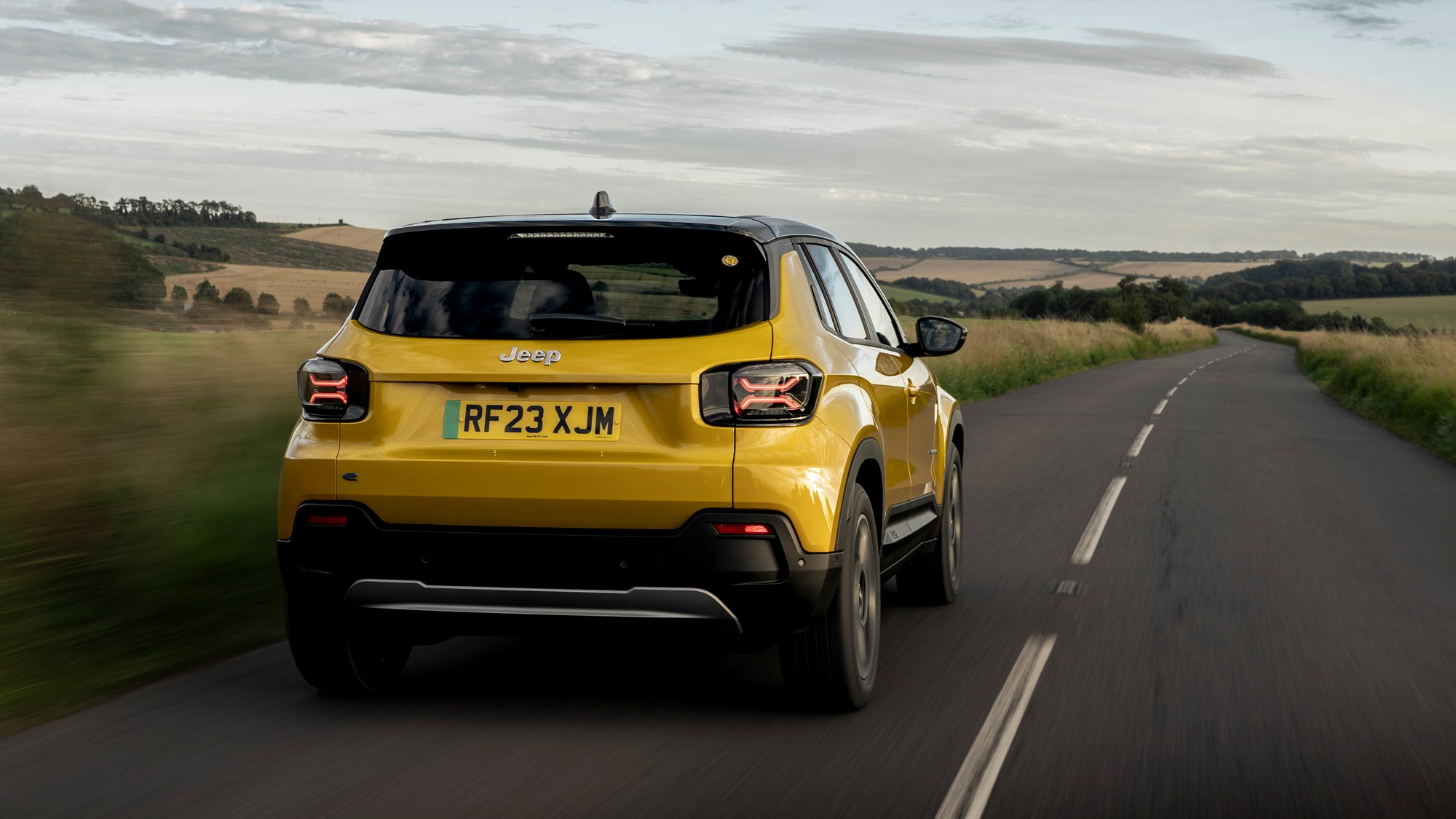
Because Jeep is now part of Stellantis, it was able to base the Avenger on the same e-CMP2 chassis found under the equally average Peugeot e-2008 and Vauxhall Mokka Electric. By using existing tech, Jeep could get the Avenger on its forecourts quickly, where the car’s sharp styling and the company’s strong branding can be leveraged to drive sales.
Sadly, e-CMP2 isn’t the best starting point if you’re trying to build a world-beating small SUV. Development cycles move quickly in the electric car game and, although Stellantis updated the platform in 2023 with a larger 54kWh battery pack and a more powerful 154bhp motor, it still isn’t good enough to spar with the tech under the newer Smart #1 or MG 4 EV hatchback.
It must do some things well. Right?
Of course. There are some good bits, such as its off-road ability. To ensure the Avenger could handle the occasional spot of bush bashing, Jeep’s engineers combed through the e-CMP2 architecture and made some changes. They added stiffer dampers, extra underbody protection and increased the car’s ride height to 200mm (making it 30mm taller than a Peugeot e-2008).
They also made the Avenger’s front and rear overhangs as short as possible to benefit its approach and departure angles. The icing on the cake is a surprisingly sophisticated traction control system that promises to keep the front wheels turning even when the going gets tough. It has dedicated settings for sand, mud and snow.
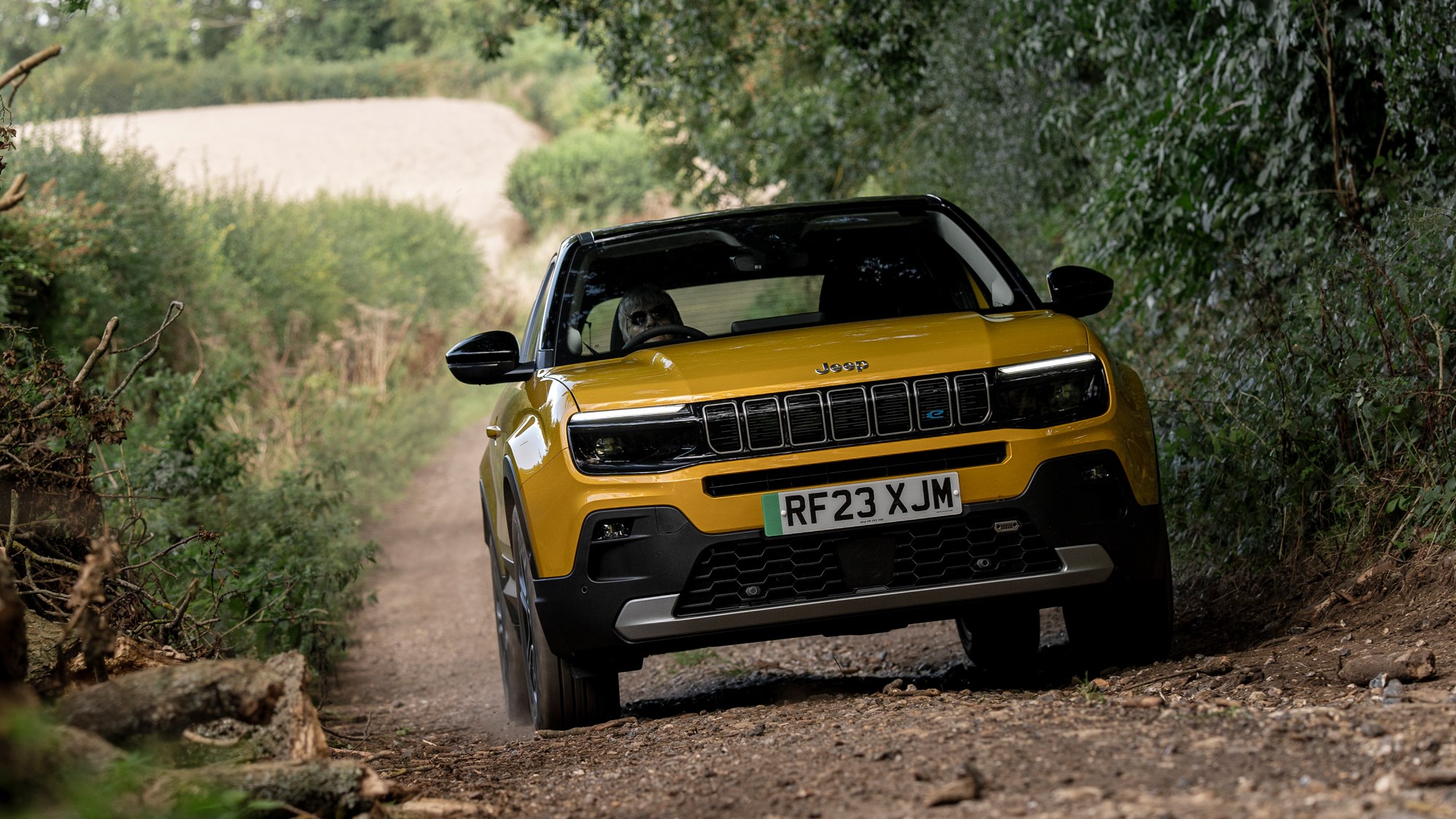
We’re incredibly thorough at CAR magazine. We take our jobs very seriously indeed. So, in the interest of scientific analysis (and not at all because we wanted to pretend we were Tommi Makkinen), we razzed an Avenger down a greenlane to see if the technology worked.
And it does! Our Avenger skipped down rocky descents, forded deep water splashes and even clawed its way up a rain-slicked hillside. It’s no Defender by any stretch of the imagination, but it’s much happier on rough terrain than the Hyundai Kona Electric or Kia Niro EV. On faster sandy tracks, we could even feel the traction control system moving the power to the wheel with the most grip.
What’s it like on the road?
Less impressive. That extra damping force has negatively affected the ride quality, especially when teamed with the 18-inch alloys fitted to our range-topping Summit test car. On broken roads, the Avenger is downright uncomfortable, with expansion joints and manhole covers sending sharp jolts through the cabin. We’re looking forward to driving the base-spec car on 16-inch alloys – and we hope the extra sidewall thickness will take the edge off the rough ride.
There’s a flipside, though. That stiff suspension keeps the Avenger flat in the bends, while its square stance makes it predictable and planted. The steering weight is also slightly better judged than other e-CMP2 cars such as the Fiat 600e. There still isn’t a great deal of feedback, but it’s heavier which makes it easier to position the car on faster roads.
The biggest problem with the Avenger is the strength of its competitors. It isn’t as comfortable as a Hyundai Kona Electric or a Kia Niro EV. Even its closest sister car, the Fiat 600e, does a better job of smoothing out shattered asphalt. And if you want an electric SUV that’s fun to drive, you’ll be better served by the Smart #1.
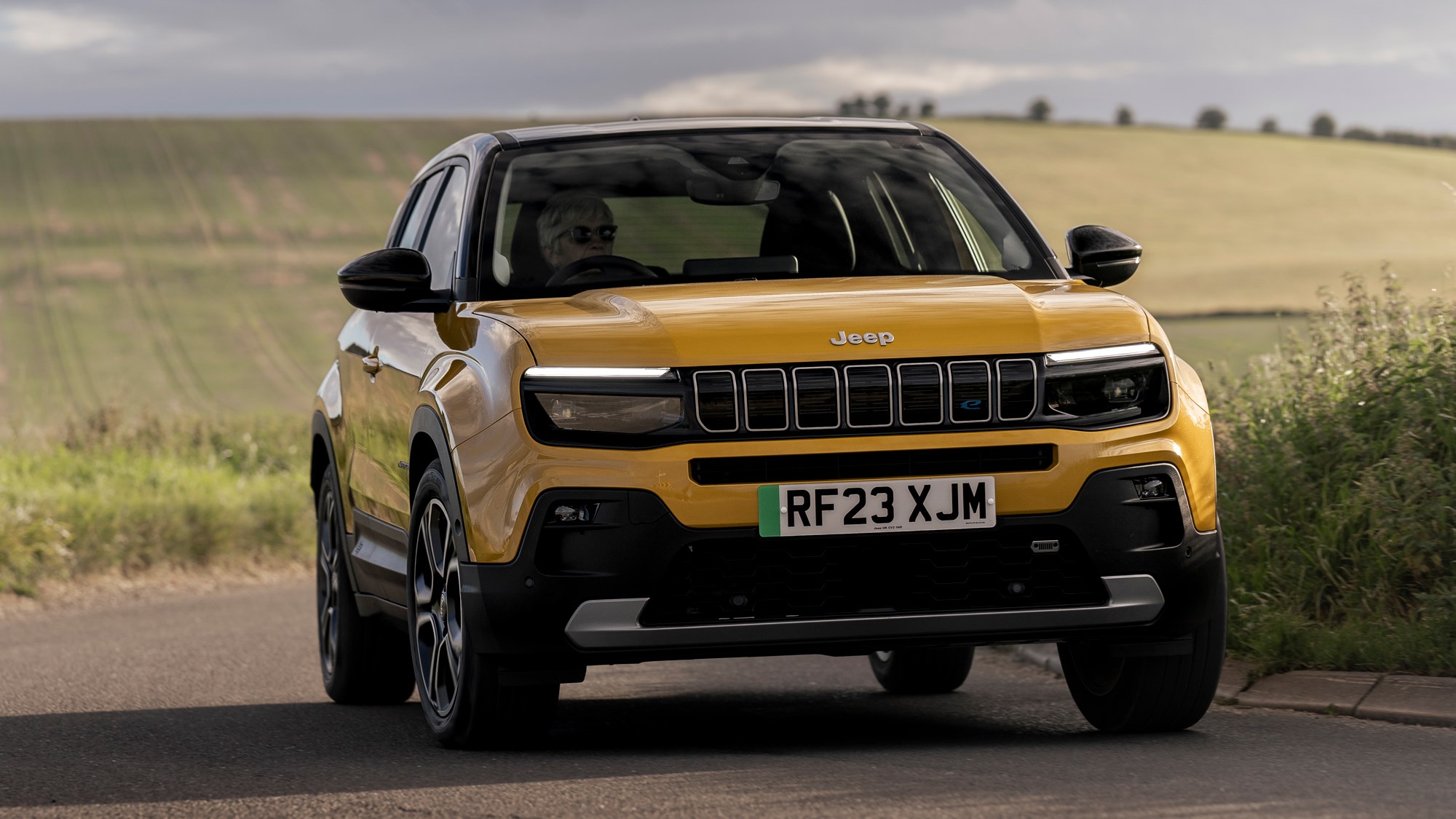
The Avenger’s electric motor is also average for the class in terms of its performance. It produces 154bhp, which is a long way behind the 201bhp you get in a Kia Niro EV or the 268bhp you get in Smart #1. Still, it has a healthy 192lb ft of torque, all of which is available the second you tickle the accelerator. That makes the car feel quite nippy away from the lights. There’s more than enough poke to get the jump on a petrol-powered SUV of the same ilk.
Performance tails off as you build speed which, unless you do a lot of motorway miles, isn’t such a huge concern. However, if you’re stepping out of an older, faster petrol-powered compact SUV such as an Audi SQ2 (which is entirely possible – Jeep tells us its customers are trading in cars from almost every other manufacturer), you might find the lack of grunt disappointing.
What’s the interior like?
Rather nice. We’ll admit, we were expecting a few more premium materials to help justify the Avenger’s rather steep asking price, but we can understand why Jeep kept things simple. Hard plastics are easier to clean than deep-grain leather or cloth dashboard trim.
The infotainment system is a common Stellantis unit shared between the Fiat 600e and the facelifted Peugeot e-2008. The menu design is a little dull and the graphics aren’t quite as crisp as the Smart #1’s system, but it works well enough. We also like that it’s mounted high on the dashboard. It means you don’t need to drag your eyes too far from the road to read the sat-nav. Wireless Apple CarPlay and Android Auto are standard, too.
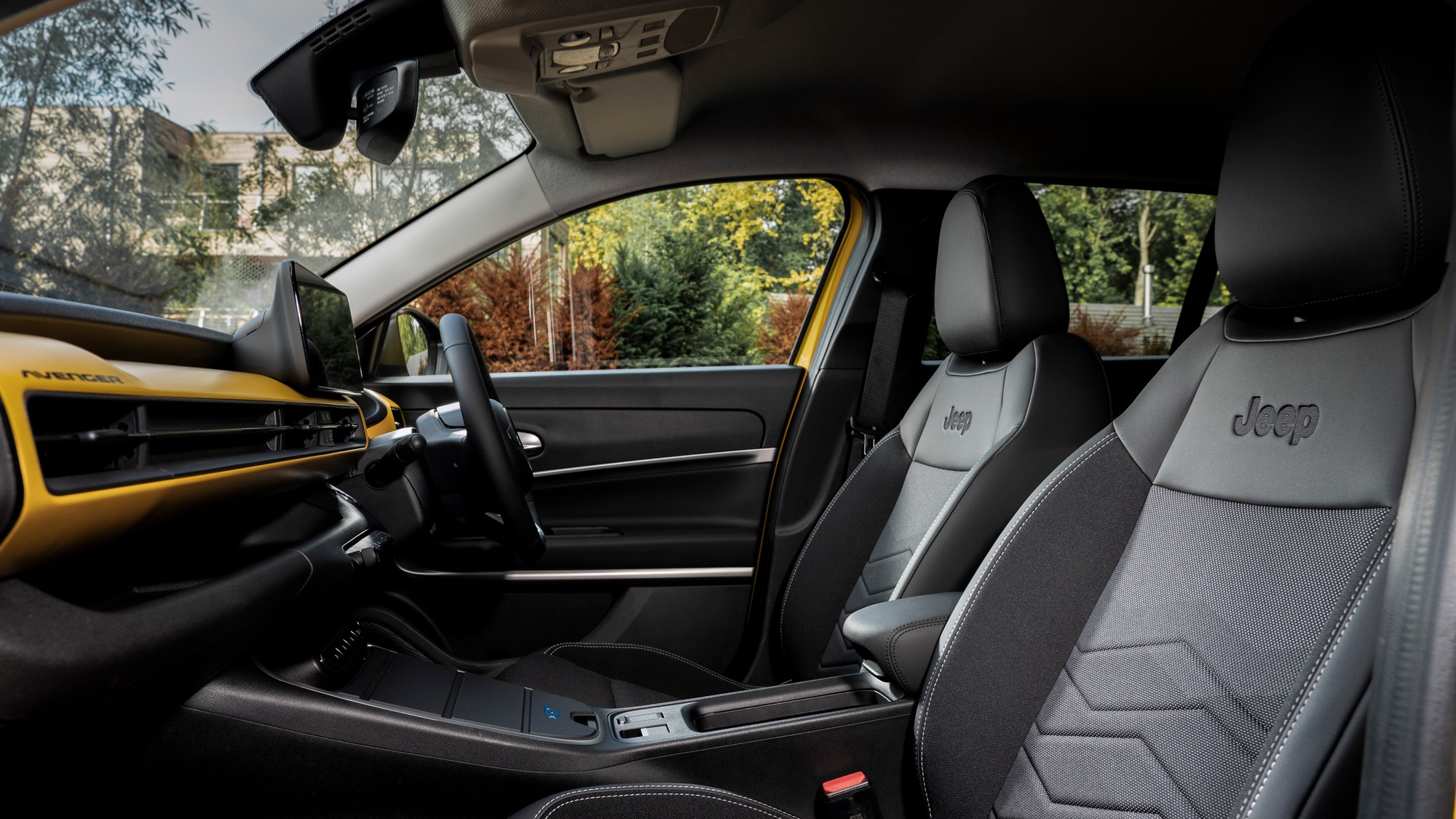
The best thing about the Jeep Avenger’s cabin is the storage. You get a whopping 34 litres of space between the various cubbies. That covered central bin can swallow 15 litres of stuff alone, which is enough to make a small bag or a large water bottle disappear. It even has a built-in wireless smartphone charger, which is great because the flap hides your phone from view and removes the temptation to check it on the move.
There isn’t much space in the back, though. With a tall driver ahead, there’s almost no legroom for passengers in the rear. At least headroom is reasonable thanks to the Avenger’s boxy styling, but boot space is, again, just average. The Avenger’s boot measures 355 litres, which makes it 120 litres smaller than a Kia Niro EV. Not an ideal family car, then.
What’s the range and charging like?
During our time with the Avenger, it averaged a respectable 4.15 miles per kWh. Our drive included a mixture of urban streets, rural B-roads and fast A-roads, although we didn’t get chance to test the battery’s longevity during extended periods of motorway cruising.
Motorways normally chew through an EV’s electricity reserves faster than the manufacturer’s official range figures would lead you to believe because the battery is under constant load. Before e-CMP2 was updated, Stellantis cars based on the platform were notorious for this foible. Hopefully, the Avenger’s more efficient motor and standard heat pump will help to lessen the blow.
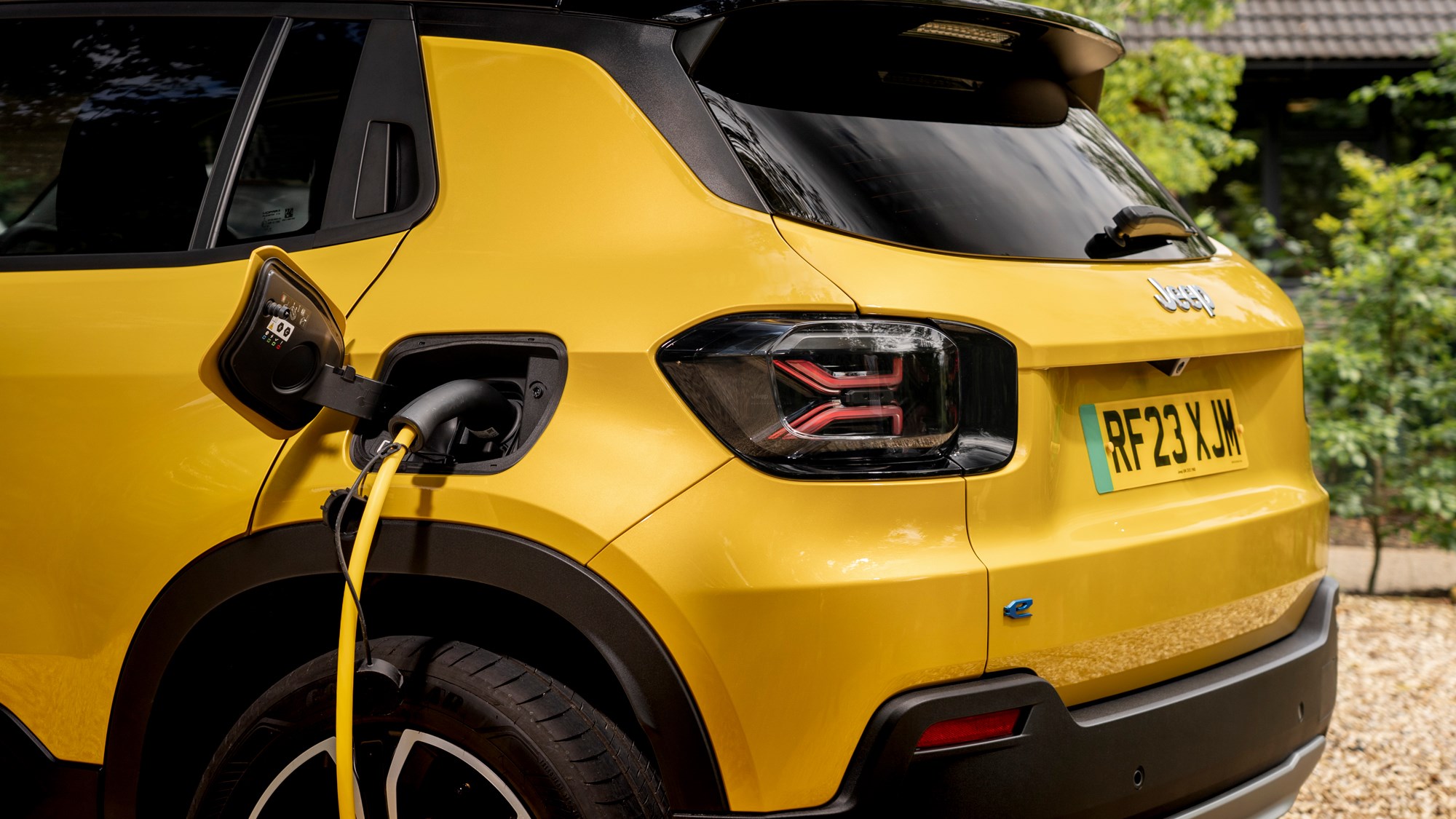
The Avenger’s charge times are good for the class, thanks in equal measure to its comparatively small battery pack and its support for 100kW DC rapid charging. Using a public rapid charger, the Avenger can charge from 20 to 80% in just 24 minutes. Connect the car to a slower 7.4kW AC wallbox charger and it can take on a full charge in around eight hours. For context, the Kia Niro EV takes nine and a half hours to fully recharge using a home wallbox because it has a larger 64.8kWh battery pack.
Verdict
We were bowled over by the Jeep Avenger’s rugged styling and off-road ability when we first drove the car in April 2023, but time has worn away its shine. Assessing it with fresh eyes on UK roads alongside its closest rivals has proved it isn’t as good as we initially thought.
We’re also struggling to work out who it’s for. The Avenger doesn’t make sense for family buyers because there isn’t much passenger space in the rear or luggage space in the boot. The Kia Niro EV and Hyundai Kona Electric are much larger inside, which makes them easier to wrestle children and their associated accessories into.
Jeep has missed the mark on the enthusiast markets, too. The Smart #1 is much better to drive on the road and, although the Avenger has more off-road ability than its peers, it’s nowhere near as capable as a proper off-roader such as a Land Rover Defender or Suzuki Jimny.
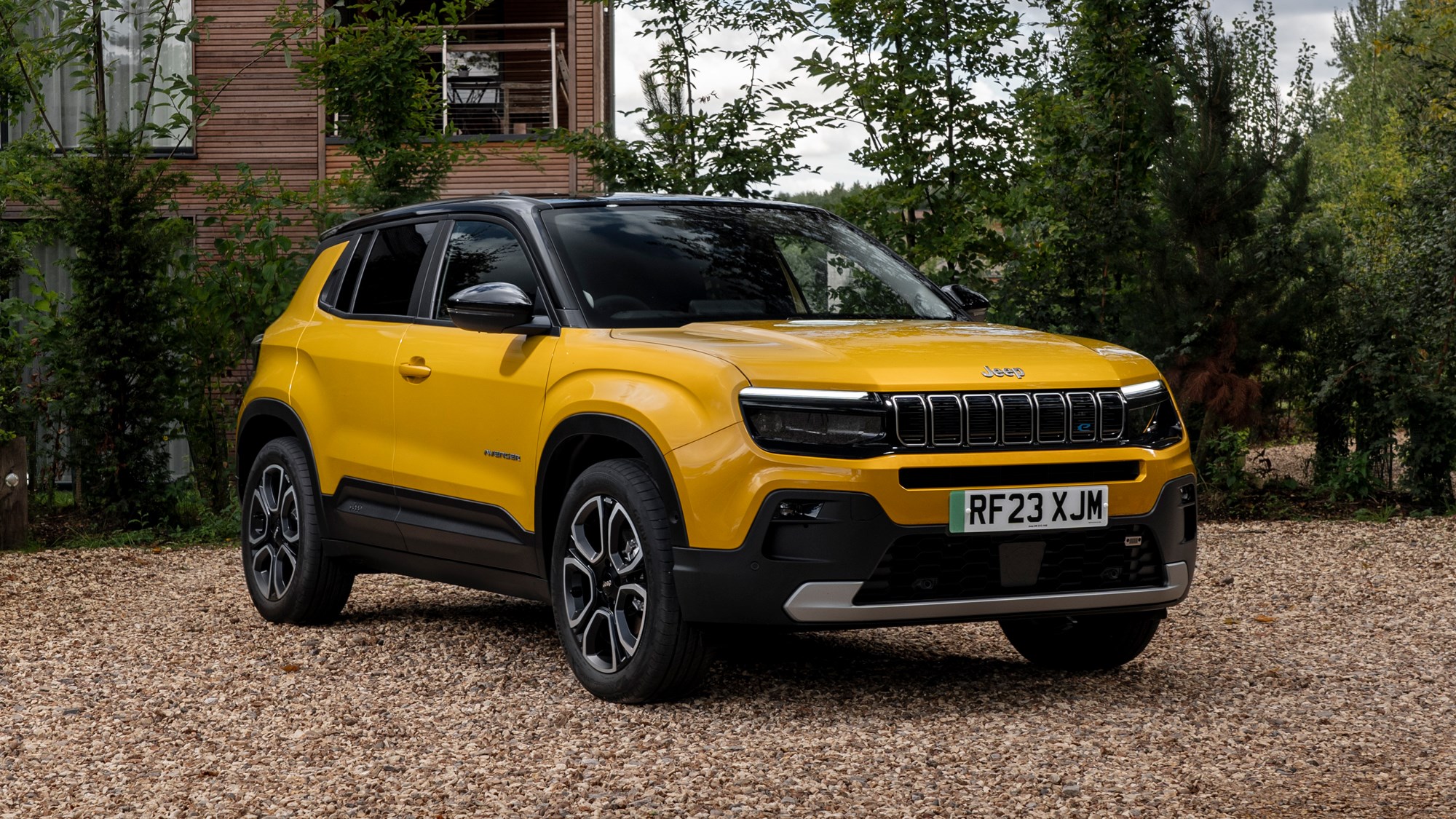
The fact is that the Avenger doesn’t excel in any area and there are plenty of similarly priced rivals that can offer you more for your money. We’ll use the Smart as an example. The cheapest model is just £250 more expensive than the most basic Avenger, but it’s faster, more engaging to drive, more comfortable, more spacious and similarly practical in terms of its cabin storage. It also has a bigger battery pack, a faster charging system and a better infotainment screen.
With your rational hat on, you’d never buy the Jeep. But we’re sure those sharp looks will encourage plenty of drivers to take the plunge.